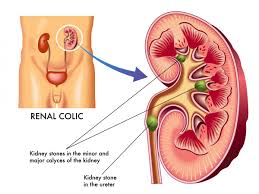- Home
- Medical news & Guidelines
- Anesthesiology
- Cardiology and CTVS
- Critical Care
- Dentistry
- Dermatology
- Diabetes and Endocrinology
- ENT
- Gastroenterology
- Medicine
- Nephrology
- Neurology
- Obstretics-Gynaecology
- Oncology
- Ophthalmology
- Orthopaedics
- Pediatrics-Neonatology
- Psychiatry
- Pulmonology
- Radiology
- Surgery
- Urology
- Laboratory Medicine
- Diet
- Nursing
- Paramedical
- Physiotherapy
- Health news
- Fact Check
- Bone Health Fact Check
- Brain Health Fact Check
- Cancer Related Fact Check
- Child Care Fact Check
- Dental and oral health fact check
- Diabetes and metabolic health fact check
- Diet and Nutrition Fact Check
- Eye and ENT Care Fact Check
- Fitness fact check
- Gut health fact check
- Heart health fact check
- Kidney health fact check
- Medical education fact check
- Men's health fact check
- Respiratory fact check
- Skin and hair care fact check
- Vaccine and Immunization fact check
- Women's health fact check
- AYUSH
- State News
- Andaman and Nicobar Islands
- Andhra Pradesh
- Arunachal Pradesh
- Assam
- Bihar
- Chandigarh
- Chattisgarh
- Dadra and Nagar Haveli
- Daman and Diu
- Delhi
- Goa
- Gujarat
- Haryana
- Himachal Pradesh
- Jammu & Kashmir
- Jharkhand
- Karnataka
- Kerala
- Ladakh
- Lakshadweep
- Madhya Pradesh
- Maharashtra
- Manipur
- Meghalaya
- Mizoram
- Nagaland
- Odisha
- Puducherry
- Punjab
- Rajasthan
- Sikkim
- Tamil Nadu
- Telangana
- Tripura
- Uttar Pradesh
- Uttrakhand
- West Bengal
- Medical Education
- Industry
Urinary tract infection detected in an hour by a new device

A German and Ireland led team collaborated to manufacture a medical device which can detect the bacteria presence in urinary tract in an hour’s time
A speedy detection of infection in a urinary tract has been made possible by a group of researchers in Germany and Ireland. The journal published indicates such a medical device which can identify Escherichia coli (more commonly known as E. coli) and Enterococcus faecalis -- two species known to cause urinary tract infections -- within 70 minutes, directly from patients' urine samples
The new diagnosis makes a marked improvement over the previous medical techniques available, which often takes 24 hours of more-to detect a bacterial infection in the urinary tract.
As reported by IANS
The lab-on-a-disc platform uses Raman microscopy, a modern optical detection method.
This medical diagnostics device is designed to harness centrifugal force to capture the tiny bacteria directly from patients' samples of bodily fluids...in this case, urine, the study said.
The work involves extremely small sample sizes, on the scale of a small raindrop, so the device needed to be a microfluidic one.
"Our device works by loading a few micro liters of a patient's urine sample into a tiny chip, which is then rotated with a high angular velocity so that any bacteria is guided by centrifugal force through microfluidic channels to a small chamber where 'V-cup capture units' collect it for optical investigation," Ulrich-Christian Schroder from Leibniz Institute of Technology in Germany explained.
The findings appeared in the journal Biomicrofluidics
A speedy detection of infection in a urinary tract has been made possible by a group of researchers in Germany and Ireland. The journal published indicates such a medical device which can identify Escherichia coli (more commonly known as E. coli) and Enterococcus faecalis -- two species known to cause urinary tract infections -- within 70 minutes, directly from patients' urine samples
The new diagnosis makes a marked improvement over the previous medical techniques available, which often takes 24 hours of more-to detect a bacterial infection in the urinary tract.
As reported by IANS
The lab-on-a-disc platform uses Raman microscopy, a modern optical detection method.
This medical diagnostics device is designed to harness centrifugal force to capture the tiny bacteria directly from patients' samples of bodily fluids...in this case, urine, the study said.
The work involves extremely small sample sizes, on the scale of a small raindrop, so the device needed to be a microfluidic one.
"Our device works by loading a few micro liters of a patient's urine sample into a tiny chip, which is then rotated with a high angular velocity so that any bacteria is guided by centrifugal force through microfluidic channels to a small chamber where 'V-cup capture units' collect it for optical investigation," Ulrich-Christian Schroder from Leibniz Institute of Technology in Germany explained.
The findings appeared in the journal Biomicrofluidics
Next Story


